
Viva Trees
Get a FREE professional tree service estimate from Viva Trees - one of the most trusted tree companies in the U.S.
OR CALL
Get a Free Estimate
Every project starts with a free tree service estimate. Enter your details to get started.

Get a FREE professional tree service estimate from Viva Trees - one of the most trusted tree companies in the U.S.
OR CALL
Every project starts with a free tree service estimate. Enter your details to get started.
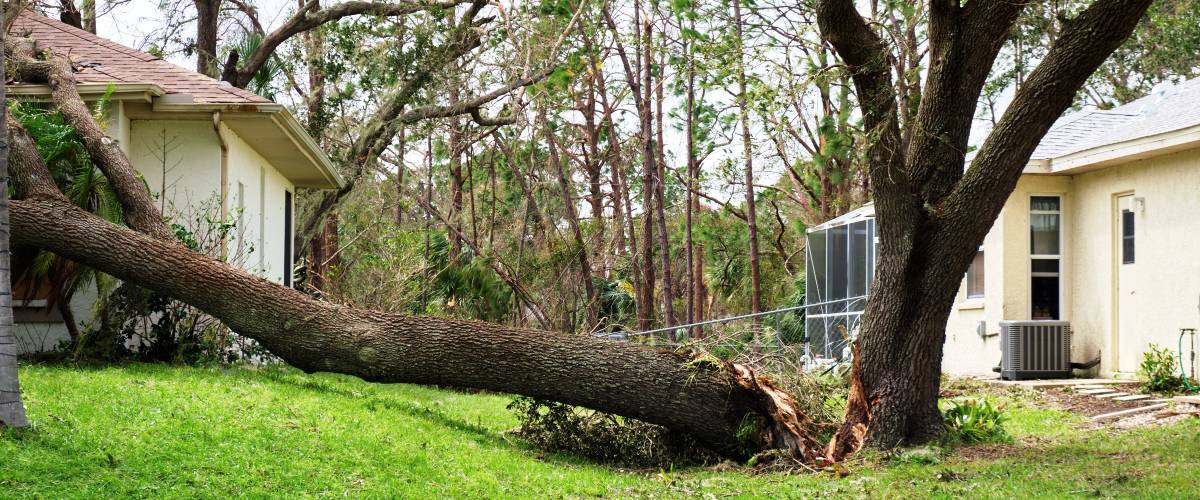
Have you ever experienced a tree falling on your property due to a storm? It’s a terrifying experience and dangerous if you don’t know how to handle it.
If you are in this unfortunate situation, don’t worry, I’ve got you covered! In this Viva Tip, I’ll be discussing what you should do if a tree falls on your property due to a storm. From assessing the damage to outlining the steps you should take to ensure your safety, I’ll provide you with the information you need to handle this situation properly.
So, how can you protect yourself and your property when a tree falls due to a storm? Read on to find out!
First, you’ll want to look around your property to ensure no one was hurt by the falling tree. Ensure to be thorough and check every nook and cranny, just in case. It’s also important to be aware of any animals that may have been in the tree when it fell. Here are the top things that you should do:
Once you’ve ensured the safety of your property and the safety of those around you, it’s time to take the next step.
Step two is determining the extent of the damage. Have a look around and take note of the extent of the destruction. Is the tree blocking a road or any pathways? Are there any branches that have fallen on your property? Are there any wires that have been knocked down?
It’s essential to determine if there are any immediate dangers. If the fallen tree has caused damage to a building or other structure, evacuate the area immediately to ensure the safety of everyone involved.
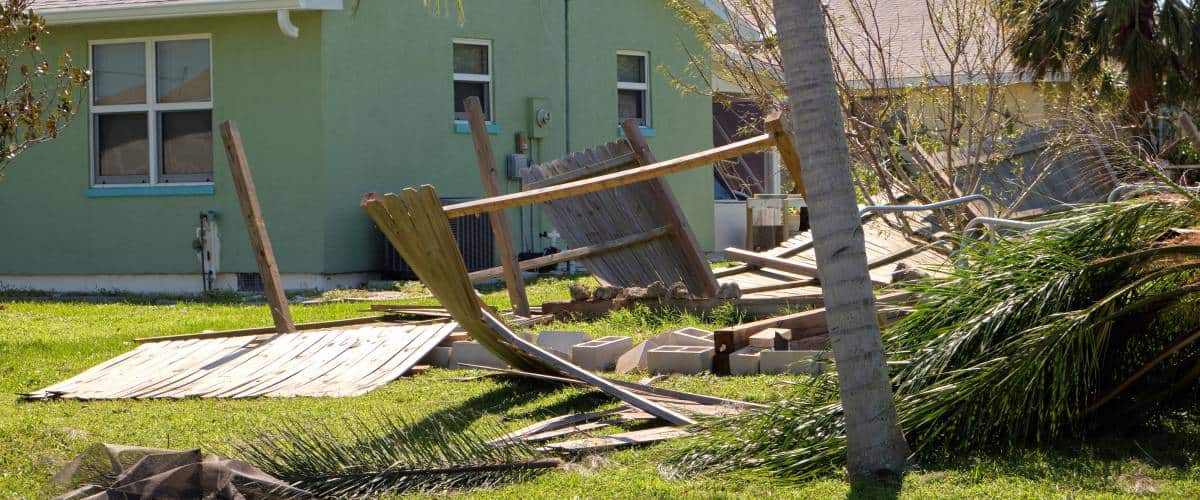
If there are no immediate dangers:
It can be overwhelming to face a disaster such as this, but taking a moment and assessing the situation is essential. Ask yourself: what are the most important things I need to take care of right away?
From there, you’ll want to…
Once you’ve assessed the situation, the next step is to contact your insurance company. They’ll send an adjuster to assess the damage when you file a claim. This adjuster can answer any questions and guide what to do next.
After you’ve contacted your insurance company, it’s time to call an emergency tree removal service. They have the skills and the tools to safely and adequately extract complex rooftop branches without additional damage. In a storm-related situation like this, you’ll want to find a reliable team of local tree care professionals who offer 24-hour emergency services. Look for a certified arborist that can provide expert tree pruning, trimming, and wood chipping services to help you get your property back in order.
Once you’ve found the right team, it’s time to work. With their help, you’ll be able to clear away any dangerous limbs and branches that may have been left behind. They’ll also be able to provide you with a thorough assessment of the situation and any potential risks that may be present.
As you move forward with the tree removal process, prioritize your safety. It’s vital that you don’t take any unnecessary risks and that you stay out of harm’s way. With the help of a professional tree service, you’ll be able to rest easy knowing that your property is in good hands.
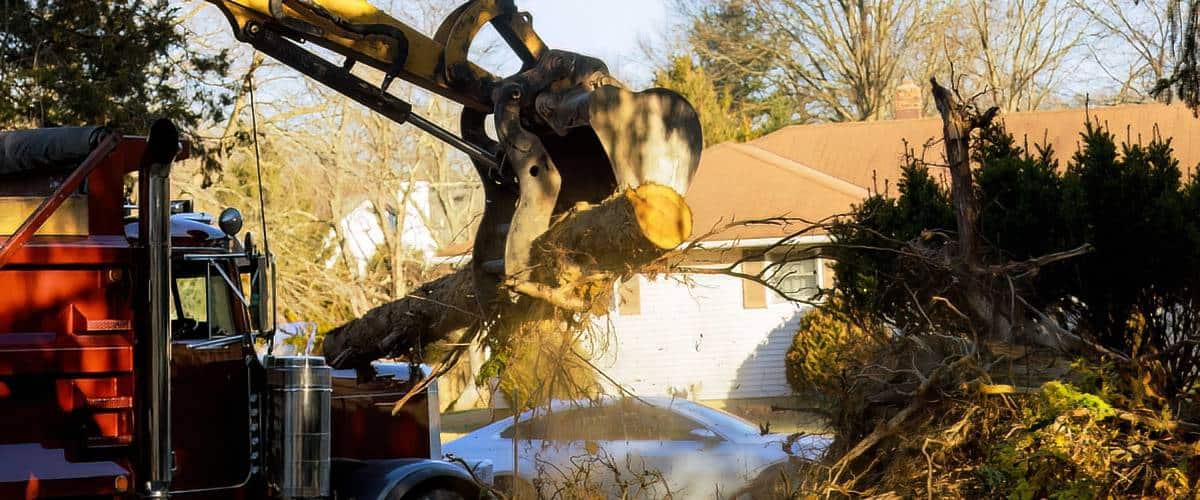
Removing any dangerous limbs and branches from the fallen tree is critical. This can be tricky, and it’s best to leave it to the professionals. They have the right tools, skills, and experience to do the job safely and efficiently. Their cost-effective service rates make it easy to budget for the job.
When handling the debris, the tree removal service will consider the root and soil restoration that may be needed. They’ll also be able to detect any signs of stress in the trees still standing, and they can offer expert advice on which trees need to go.
Once the dangerous limbs and branches have been removed, you’ll want to do the following, depending on the damage caused by the fallen tree or trees:
It’s time to document the damage and costs. To do this, you’ll need to do the following:
Once you’ve taken the photos and gathered the receipts, keeping this paperwork safe and secure is essential. This will ensure you have all the necessary documentation if you pursue insurance coverage for the damage.

Next up, it’s time to understand your insurance coverage. By familiarizing yourself with your insurance policy, you can make an informed decision about whether or not to pursue a claim.
Now that you’ve documented the damage and costs of the fallen tree, it’s time to examine your insurance coverage. Understanding your coverage limit is critical to ensuring you get the help you need to get your property back to its original state.
It can be confusing to navigate the complex language of insurance policies, but knowing what you’re covered for is essential. Think of it like a chess game – you must move with the right strategy to get the most out of your coverage. So, take the time to review your policy and ensure you’re not leaving anything on the table.
Once you’ve got a good handle on your insurance coverage, it’s time to move on to the next…
Next up: consider homeowner’s association regulations.
Before you assess the damage caused by the fallen tree, it’s essential to understand the homeowner’s association regulations that may come into play. Depending on your area, your HOA may have certain restrictions you must follow when dealing with a fallen tree. For example, they may require that you remove the tree within a specific timeframe or hire an approved contractor to do the job for you.
If you’re unsure about the regulations in your area, it’s best to check with your HOA before doing anything else. This way, you can ensure you follow the guidelines and not put yourself in a difficult situation.
After you’ve taken the time to consider the HOA regulations, it’s time to move on to the next step – understanding your local laws.
Once you’ve considered any homeowner’s association regulations, it’s time to understand your local laws. You’ll need to know any rules or regulations for storm damage on residential property. It’s essential to take the time to do your research, so you know exactly what you can and can’t do. Think of it like a map; you can navigate the process if you understand the rules.
When it comes to storm damage, knowing your rights is essential. You may be able to request assistance from your local government, or you may be responsible for the cost of the cleanup. Knowing what resources are available to you is essential to make the best decision.
Once you’ve understood your local laws well, it’s time to move on to the next step.
Once you’ve understood your local laws, you must dispose of any debris the fallen tree may have left behind. Depending on the size and condition of the tree, you may not be able to move it away from your property. If that’s the case, it’s best to break it down as much as possible and dispose of it properly. That’s where storm damage cleanup services come in.
If the tree has been cut into manageable pieces, you’ll want to transport it to your local landfill or composting site. This will help to keep your property and the surrounding area clean and safe. I also use a tarp or blanket to cover up any debris I’m transporting to avoid causing any mess or disruption to my neighbors.
If you can move the tree away from your property, consider donating it to a local firewood program or a nearby farm. This is a great way to give back to your community and can help provide a much-needed resource to those who need it.
It’s also important to remember to clean up any broken branches or leaves that may have been left behind. If you have any leftover wood chips or pieces, you can use them to mulch gardens and flower beds or even create a compost pile.
TIP: Disposing debris properly will help ensure your property is safe and clean. It will also help to protect the environment and to keep your local area looking beautiful!
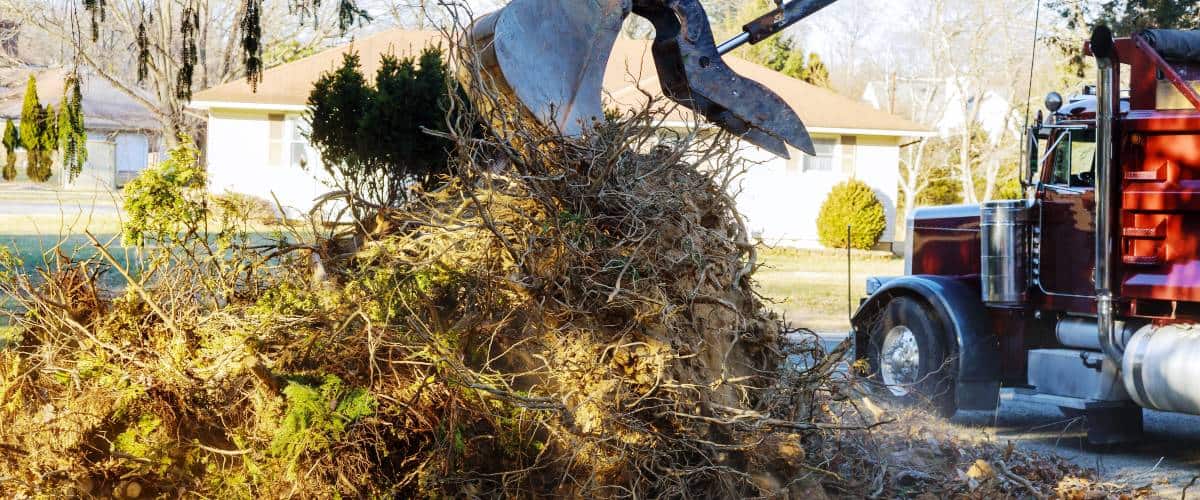
Once you’ve disposed of the fallen tree’s debris, you may be left with a pile of chipped wood that’s too damaged to be used for firewood. Don’t let this pile of wood go to waste! Instead, consider using it as mulch or compost.
I like to use wood chips to create natural mulch for my garden. It’s great for retaining moisture in the soil and helping keep weeds at bay. Plus, it looks great and adds a natural texture to any garden. You can add wood chips if you have a compost pile in your backyard. They’ll help create rich and healthy soil, perfect for planting.
Rather than letting the fallen tree become a nuisance, you can use it to help your garden thrive. It’s a simple way to make the most of an unfortunate situation and breathe new life into your outdoor space.
Now that you’ve taken care of the fallen tree, it’s time to move on to the next step:
Planting a new tree to replace the fallen one.
Once you’ve taken care of the mulch and compost, it’s time to think about the best methods to do after the storm, like replacing the fallen tree. Planting a new tree is the perfect way to restore life to your property and bring some natural beauty back after a storm. It’s also an opportunity to get creative and choose a species of tree that will fit well with the surrounding landscape.
When it comes to selecting a new tree, I like to take my time to research the different types of trees that are native to my area. This helps me to find the species that will thrive in my specific climate and soil conditions. I also like to consider the size and shape of the tree so that it won’t outgrow or overcrowd its space.
It’s important to remember that planting a new tree is a big commitment. It requires patience, care, and attention to ensure the new tree grows healthy and strong. This is why it’s a good idea to contact an arborist for assistance in selecting a replacement tree. They can provide valuable advice and guidance on how to best care for your new tree and help to ensure that it continues to thrive for years to come.
Once you’ve determined that a tree has fallen on your property due to a storm, you must take the necessary steps to replace it. An essential part of this process is contacting an arborist who can help you select the correct type of tree to plant.
An arborist is a tree care professional who is experienced in tree health and can advise on selecting and caring for the correct type of tree for your area. When you contact an arborist, they will assess your property and climate and list suitable replacement tree types. They can also advise you on properly caring for your new tree and ensuring it will thrive in its new environment.
The arborist will also be able to provide you with important information about the legal requirements and regulations for planting a new tree. Depending on where you live, there may be certain restrictions in place that you need to be aware of. It’s essential to consider these regulations and restrictions before you begin replacing a fallen tree.
So, if you’ve recently had a tree fall on your property due to a storm, you must contact an arborist for assistance selecting a replacement tree. With their help, you can choose the best tree for your area and ensure it can thrive in its new home.
Next, it’s time to move on to hiring a professional tree service to help with pruning and planting new trees.
Once you’ve contacted an arborist for assistance selecting a replacement tree, you’ll want to start the process of planting and pruning. You’ll want to hire a professional tree service to ensure the job is done correctly. Here are a few tips for getting the most out of your tree service:
1) Make sure the service is certified and insured;
2) Ask for customer references;
3) Find out how long the company has been in the business.
Having a professional take care of pruning and planting new trees is always a good idea. They have the knowledge and experience necessary to get the job done right. Plus, it’s much less work for you, and you’ll surely get the best results.
Once the new tree is planted and the old one is gone, it’s time to rejuvenate your property. To do this, you’ll want to consider professional landscaping services. They’ll be able to help you bring your outdoor space back to life, and they’ll be able to make sure it looks as beautiful as it did before the storm.
If a tree has fallen on your property due to a storm, you should consider other things to help rejuvenate your property. One of these is hiring a professional landscaping service to help repair the damage that was done. Professional landscapers can help to restore your property to its former glory by removing the debris, pruning the remaining trees, and planting new trees and shrubs.
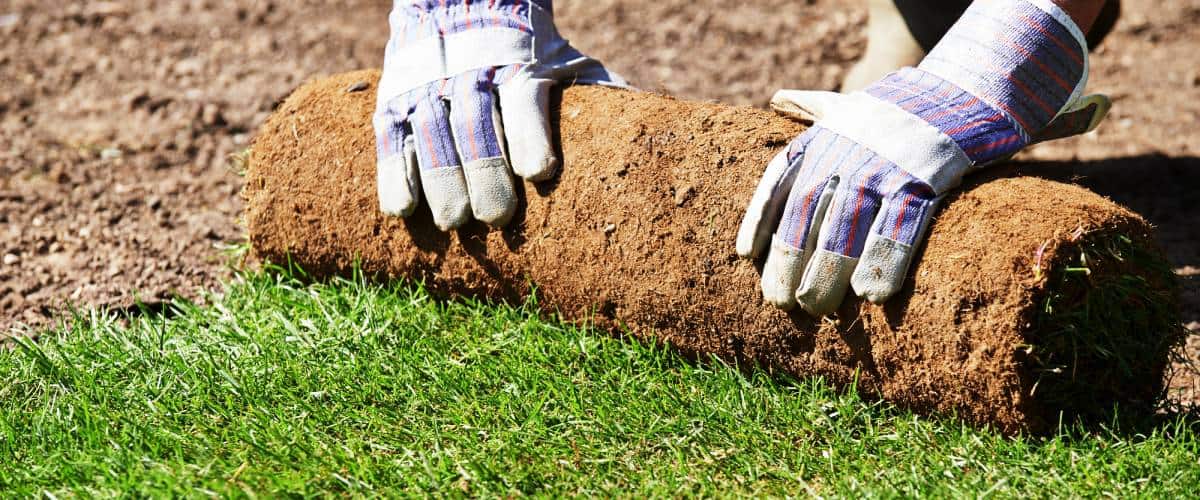
The truth is that even if you have the skills and knowledge to do all this work, it can be time-consuming and expensive. Hiring a professional landscaping service can save you time and money while giving you peace of mind that the job is done correctly. Plus, the company will be able to provide you with an expert opinion on which plants are best suited for your property and will be able to help you choose the right plants for your specific needs.
When looking for a reliable landscaping service, you must ask for references and do research. You’ll want to ensure the company you hire is licensed, insured, and experienced with the work you need to be done. You should also inquire about additional services they may offer, such as pest control and fertilization, to ensure you get the most out of your investment.
If you want to restore your property after a storm, hiring a professional landscaping service can be a great way to get the job done quickly and effectively. With their help, you can return your property to look its best in no time.
Dealing with a fallen tree can be a costly and stressful experience, but emergency tree services can help mitigate the damage. Our guide on the costs of emergency tree services covers the most critical factors that affect the cost, including the size, the extent of the damage, and the tree’s location.
Filing an insurance claim when a tree falls on your property due to a storm can be daunting and confusing. One question will likely arise: How quickly will my insurance company respond to my claim?
The answer to this question depends on various factors, including the type of policy you have and the severity of the damage. Generally speaking, however, insurers typically respond to claims within a few days to a week. The response will likely be faster if minor damage, such as a few broken branches. On the other hand, if the damage is more severe, such as the entire tree being uprooted, the response may take a bit longer.
Remembering that insurance companies will likely receive high claims after a major storm is essential. As such, your claim may take longer than expected to process. To ensure your claim is handled quickly, contact your insurer as soon as possible and provide them with any necessary information or documentation.
At the end of the day, the best way to ensure your insurance company responds quickly to your claim is to be prepared. Gather all necessary documents, photos, and other evidence of the damage, and contact your insurer as soon as possible. By following these steps, you can rest assured that your claim will be handled promptly.
Once you’ve determined that your insurance company will cover the cost of removing a fallen tree from your property, it’s time to figure out the best ways to go about it. While it’s tempting to grab a chainsaw and start sawing away, this is one of the most dangerous ways to remove a tree from your property.
The best way to do this task is to hire a professional to do the job for you. They will have the right tools and safety equipment and be able to safely and efficiently remove the tree from your property. This way, you won’t have to worry about the risk of injury or property damage.
You must be highly cautious if you decide to go the DIY route and remove the tree yourself. Make sure you have the proper protective gear and someone there to help. You’ll also want to ensure you’re using the right tools, such as chainsaws and ropes, to remove the tree safely.
It’s also important to remember that removing a tree is not a quick or easy task. You’ll need to take your time and be patient as you work. It’s about cutting the tree down and safely disassembling it so it can be removed from your property.
Removing a fallen tree from your property can be daunting, but staying safe and taking the necessary precautions is essential. Hiring a professional is the best way to go, but if you decide to remove the tree yourself, ensure you have the right tools and safety gear to do it properly. With patience and caution, you can safely remove the tree and get your property back in order.
After safely removing the tree from your property, you may wonder what type of tree to replant. The type of tree you choose will depend on a few factors, so it’s essential to consider the size of the available space, the climate in your area, and the amount of sunlight your yard receives.
When it comes to replanting, I recommend choosing a tree that is native to your area. Native trees are hardy and well-adapted to the climate and can often survive in conditions that non-native trees might struggle with. Many native species also provide habitat for birds and other wildlife, so you can do your part to help conserve the local environment.
When it comes to size, select a tree that will stay within the boundaries of your yard. Smaller trees such as crabapple, dogwood, and cherry are good choices if you don’t have much space. If you have an oversized yard, consider more giant trees like maple, oak, and elm.
Finally, consider the amount of sunlight your yard receives. Try trees such as magnolias, willows, and poplars if it’s sunny. You can go for birch, cedar, and hemlock species if it’s a shadier area.
When selecting a tree to replant, it’s essential to consider your decision’s long-term effects. Remember that the tree you choose will be around for many years to come, so be sure to choose one that will thrive in your yard and provide a safe place for birds and other wildlife.
Once you’ve assessed the damage and determined that a tree needs to be removed from your property, you’ll need to decide how to do it. Should you attempt tree removal and replanting yourself or hire a professional?
If you want to take on the task yourself, you’d better be prepared for an exhausting and herculean effort. Tree removal and replanting is no easy feat, and you’ll need to be equipped with a hefty dose of determination and muscles of steel. Plus, you’ll need to be familiar with the right tools, techniques, and safety measures. If you’re not confident you have what it takes, you’d better call a professional to do the job.
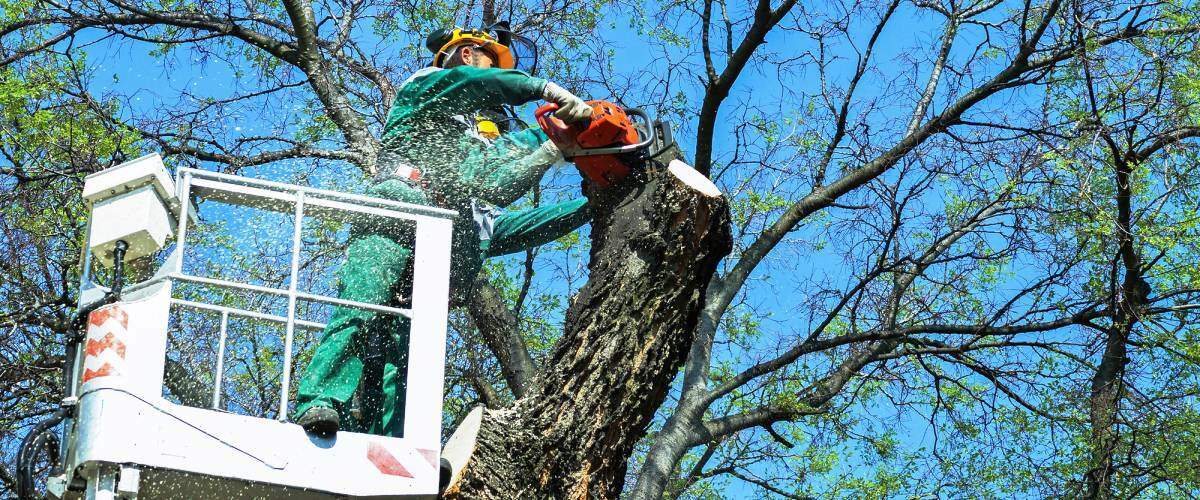
On the other hand, if you have the knowledge and the strength to do the tree removal and replanting yourself, then there’s no reason why you can’t go for it. Ensure you have the appropriate gear, such as a chainsaw, gloves, a sturdy ladder, and a wheelbarrow. Plus, you’ll need to be familiar with the local regulations and guidelines for tree removal and replanting.
No matter your route, ensuring the job is done correctly is essential. After all, poorly executed tree removal and replanting can cause more damage than good. So, take the time to assess your situation and decide if you’re up for tackling it yourself. Otherwise, it may be best to leave it to the professionals.
If a tree falls on your property due to a storm, you must decide whether to remove it or hire a professional. But before you do either, you should know the additional costs associated with such a task.
The first cost to consider is the price of the tree removal itself. Depending on the size of the tree and the type of removal needed, this can range from a few hundred dollars to over a thousand. If you hire a professional, you should get quotes from several companies before deciding.
Another cost to consider is the cost of replacing the tree. If you don’t have a replacement tree ready, buy one from a nursery or tree farm. The cost of a replacement tree varies depending on the size and type of tree you purchase.
Finally, you’ll also need to factor in the cost of disposing of the fallen tree. This can include hauling away the tree and disposing of it at a local landfill. Some tree removal companies may use this service in their price, so it’s worth asking about.
If you decide to take on the task yourself, you’ll need to purchase the necessary tools and equipment for removal. This can include things like a chainsaw, rope, and safety gear.
No matter your route, it’s essential to factor in all the costs of dealing with a fallen tree on your property. It’s also important to remember that safety is the most important thing. Suppose you’re uncomfortable removing the tree; hiring a professional to do the job for you is best. Making sure that your family and property are safe should always be your top priority.
Dealing with a fallen tree during a storm can be stressful and difficult. However, it is crucial to take the necessary precautions to ensure the safety of your property and those around you.
The first step is to contact a professional tree removal service to assess the extent of the damage and safely remove the tree. In addition, it may be necessary to contact your insurance provider to see if the damage is covered.
It is essential to take prompt action when a tree falls on your property due to a storm. By taking the necessary steps and working with a professional tree removal service, you can ensure the safety of your property and those around you.